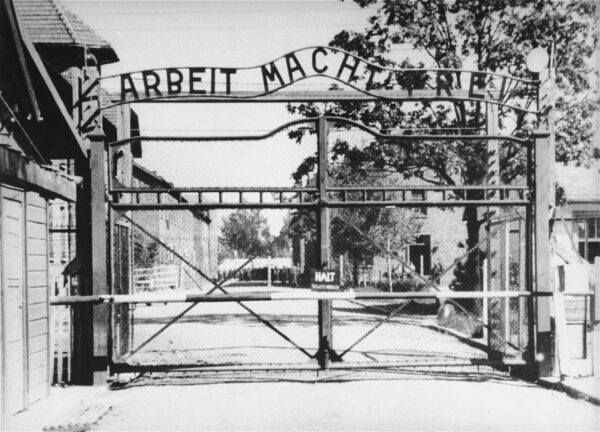
—Himmler gives order to establish the camp.
—The Arbeit Macht Frei sign was erected by prisoners with metalwork skills on Nazi orders in June 1940.
—German authorities in occupied Poland deport 728 Polish prisoners from a prison in Tarnow to Auschwitz. A small group of Polish Jews were in this transport.
—Auschwitz 1 Created from old barracks abandoned by the Polish Army artillery.
Polish resistance informs the Polish Government in exile in London about the camp.
Pictured: Member of the Polish government-in-exile Jan Karski, who had been smuggled into the Warsaw Ghetto and a concentration camp and informed world leaders about the treatment of the Jews. Photo credit: Yad Vashem Photo Archives
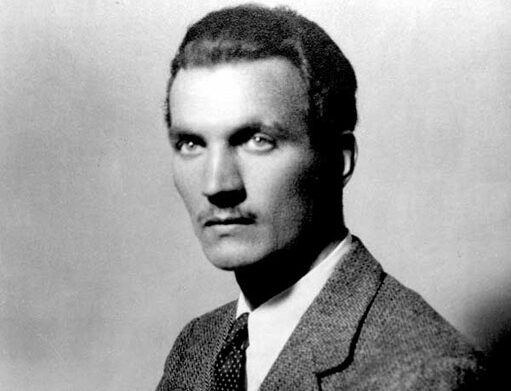
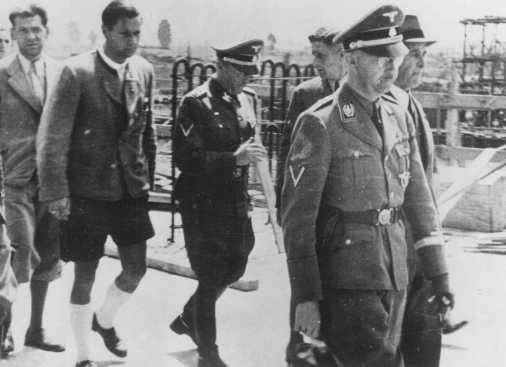
Reichsfuehrer SS and Chief of German Police Heinrich Himmler inspects Oswiecim (Auschwitz). On this visit, he orders both the expansion of Auschwitz I camp facilities to hold 30,000 prisoners and the building of a camp near Birkenau. Himmler also orders that the camp supply 10,000 prisoners for forced labor to construct an I.G. Farben factory complex at Dwory, about a mile away.
Photo: SS chief Heinrich Himmler (right) during a visit to the Auschwitz camp. Poland, July 18, 1942. Credit: USHMM /Instytut Pamieci Narodowej
—The first gassings of prisoners occur in Auschwitz I. The SS tests Zyklon B gas by killing 600 Soviet prisoners of war and 250 other ill or weak prisoners. Testing takes place in a makeshift gas chamber in the cellar of Block 11 in Auschwitz I.
—Camp authorities start operating the first gas chamber in Auschwitz I.
Photo: Containers of Zyklon B poison gas pellets found at the Majdanek camp after liberation. Poland, after July 22, 1944. Credit: USHMM/ Instytut Pamieci Narodowej
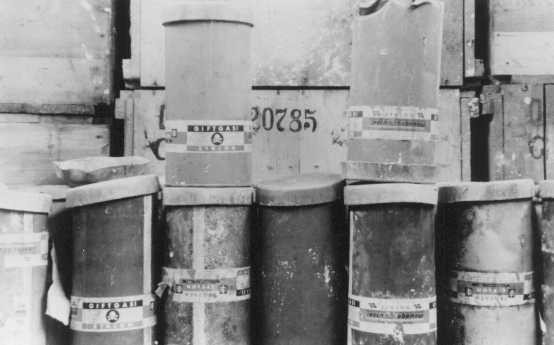
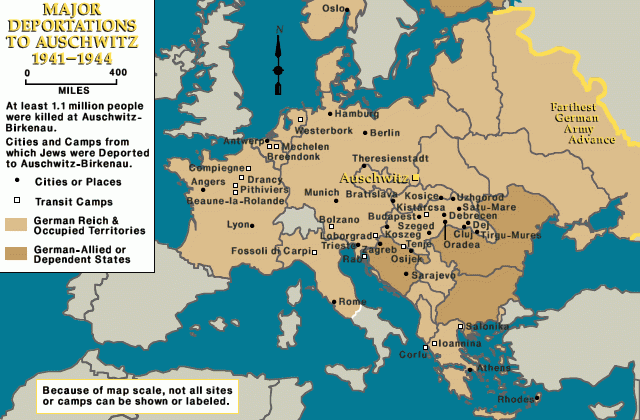
—Nazis set plans for “Final Solution,” the genocide of Europe’s Jews.
—The first transport of Jews (1,300) from Bytom (Beuthen) in German-annexed Upper Silesia arrives in Auschwitz I. The SS camp authorities kill all those on the transport immediately upon arrival with Zyklon B gas.
Photo: USHMM
—Auschwitz II-Birkenau starts functioning. Located 3 kilometres from Oświęcim, in the small village of Brzezinka (Birkenau).
—First mass transport of foreign Jews from Slovakia (27,000), Slovak Jewish women were the only Jewish women for three months. 69,000 Jews from France.
—Start of deportation of 300,000 Jews from Poland, 23,000 Germany and Austria.
—First Birkenau “selection” of arriving prisoners takes place.
—Began tattooing Jewish prisoners with a twin-needle device.
Photo: A prisoner displaying a tattoo in Auschwitz. Credit: Auschwitz.org
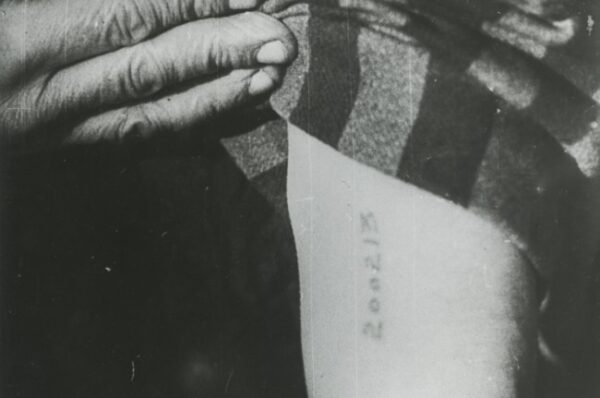
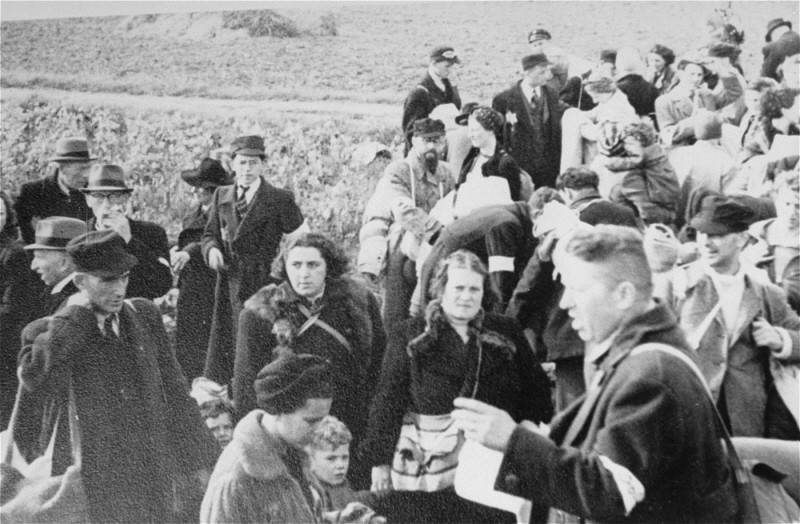
Start of deportation to Auschwitz of 60,000 Jews from Holland.
August – Start of deportation to Auschwitz of 25,000 Jews from Belgium and 10,000 Jews from Yugoslavia.
Photo: Deportation of Dutch Jews from Hooghalen. Dutch Jews from Hooghalen during deportation to the Westerbork transit camp. The Netherlands, October 1942. Credits: US Holocaust Memorial Museum, courtesy of Trudi Gidan
Auschwitz III-Monowitz active, a labor camp for the IG Farben Buna plant in Monowitz
Start of deportation to Auschwitz of 46,000 Jews from the Protectorate of Bohemia and Moravia.
Photo: Czech Jews are deported from Bauschovitz to Theresienstadt ghetto. Czechoslovakia, between 1941 and 1943. Credits: USHMM/Jewish Museum of Prague
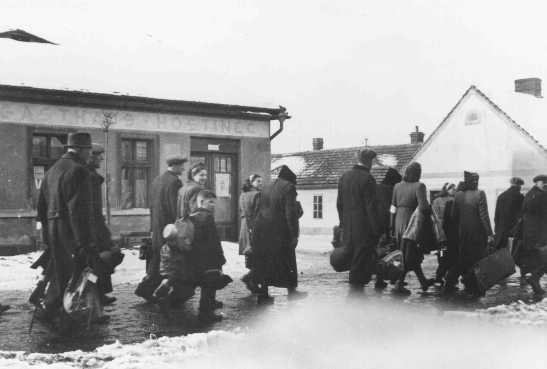
First transport of Jews from Norway. In total, almost 700 people arrive in two transports.
German SS and police authorities deported approximately 175,000 Jews to Auschwitz in 1942.
End of the year – SS doctors start sterilization experiments on male and female prisoners.
Photo: Jewish women from Subcarpathian Rus who have been selected for forced labor at Auschwitz-Birkenau, march toward their barracks after disinfection and headshaving. Credit: United States Holocaust Memorial Museum, courtesy of Yad Vashem (Public Domain)
Start of deportation of 55,000 Jews from Greece.
The SS assigned Mengele to Auschwitz. See Personal Statements From Victims of Nazi Medical Experiments
Camp authorities start up four crematoria with gas chambers at Auschwitz II-Birkenau.
Photo: The furnace hall area in the Gas Chamber and Crematorium No. II building in Birkenau. Credit: Auschwitz.org
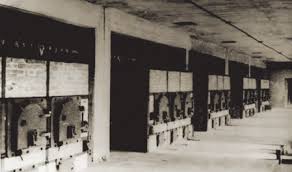
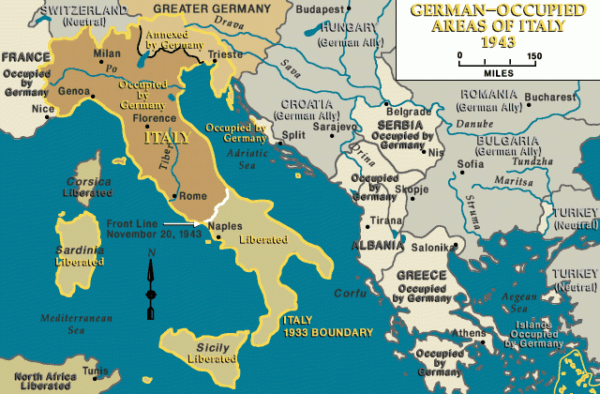
Establishment at Birkenau of the so-called “Theresienstadt camp” for Jews arriving from the ghetto in Terezín.
Start of deportation to Auschwitz of 7,500 Jews from Italy
Photo: USHMM
German SS and police authorities deport approximately 160,000 Jews to Auschwitz.
First Ally planes flying over Auschwitz take aerial photographs, which show the gas chambers and smoke from the burning pits.
The first two transports of Hungarian Jews arrive in Auschwitz. The start of deportation to Auschwitz of almost 438,000 Jews from Hungary.
SS and Police authorities deport more than 585,000 Jews to Auschwitz. (April-November
Photo: Photo taken by the 60 Photo-Reconnaissance Squadron of the South African Air Force operating from southern Italy on 31 May 1944 for bombing intelligence purposes. Credit: Yad Vashem
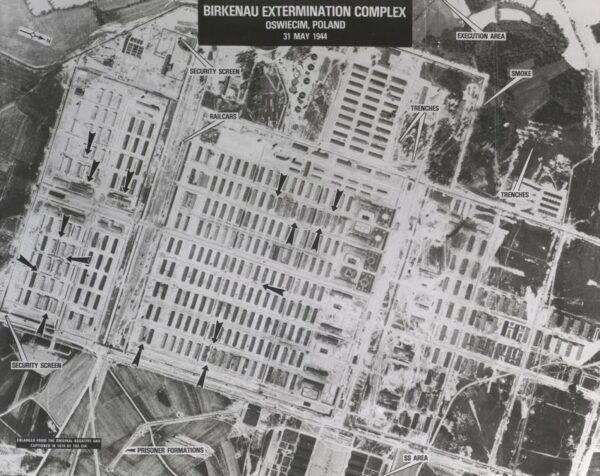
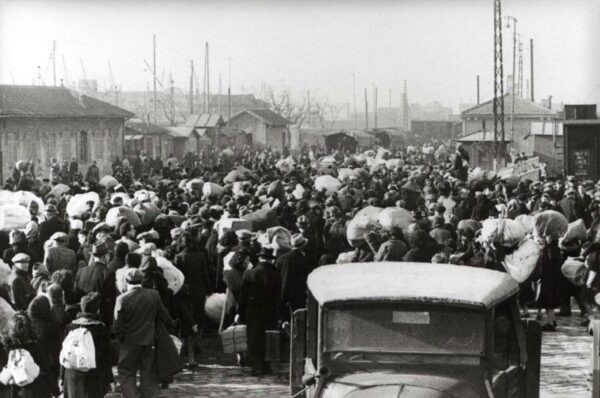
The deportation of Hungarian Jews is halted by order of Regent Miklos Horthy. The last transport from Hungary arrives on July 11.
Liquidation of Theresienstadt. The Nazis murder about 7,000 Jews in the gas chambers.
64,759 Jews were deported from Drancy in 64 transports. Approximately 61,000 of these Jews were sent to Auschwitz-Birkenau. Fewer than 2,000 of the almost 65,000 Jews deported from the Drancy camp survived the Holocaust.
Photo: Deportation of Jews from Marseilles to Drancy. Most were transferred to Auschwitz. Credit: Yad Vashem
Members of the Jewish prisoner “special detachment” (Sonderkommando) that was forced to remove bodies from the gas chambers and operate the crematoria stage an uprising. They successfully blow-up Crematorium IV and kill several guards.
November 25
SS chief Heinrich Himmler orders the destruction of the Auschwitz-Birkenau gas chambers and crematoria. During this SS attempt to destroy the evidence of mass killings, prisoners will be forced to dismantle and dynamite the structures.
Photo: Auschwitz II-Birkenau concentration camp. Members of the Sonderkommando burning corpses on pyres in pits in 1944. Photographer unknown, 1944. Credit: Auschwitz.org
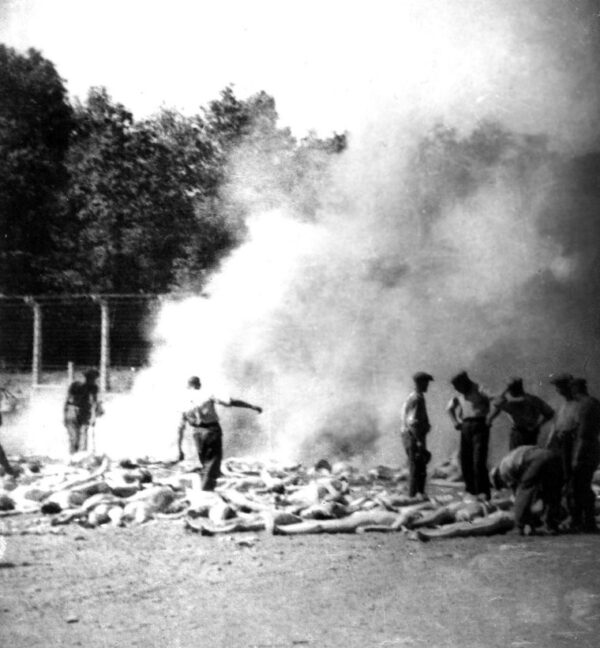
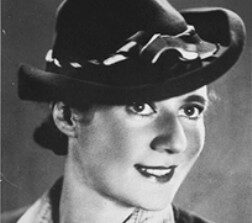
January 6 Some two weeks before the camp was evacuated, Robota, Gertner, Safirsztajn, and Wajsblum were hanged in the presence of the other prisoners.
January 17–27 As Soviet units approach; the SS evacuates to the west the prisoners of the Auschwitz concentration camp complex. Tens of thousands of prisoners, mostly Jews, are forced to march to the cities of Wodzislaw and Gliwice in the western part of Upper Silesia. In all, nearly 60,000 prisoners are forced on death marches from the Auschwitz camp system. As many as 15,000 die during the forced marches. Thousands more were killed in the days before the evacuation.
Photo: Prewar portrait of Ala Gerntner. Credit: USHMM
January 27 Soviet troops enter the Auschwitz camp complex and liberate approximately 7,000 prisoners remaining in the camp.
In cooperation with their allies, the Germans carried out 50% of the plan, murdering some 5 to 6 million Jews in Europe. Of this total, Auschwitz (Birkenau) accounted for about 20% — one million people.
Photo: Children liberated from Auschwitz in 1945. Credit: Yad Vashem
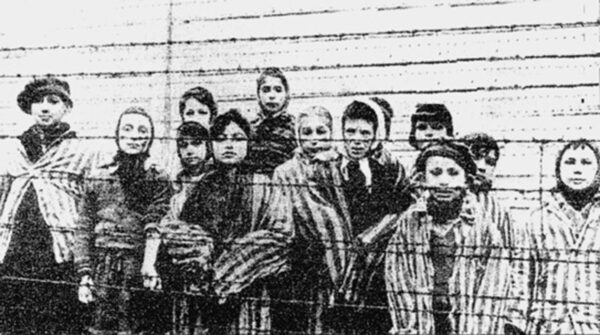
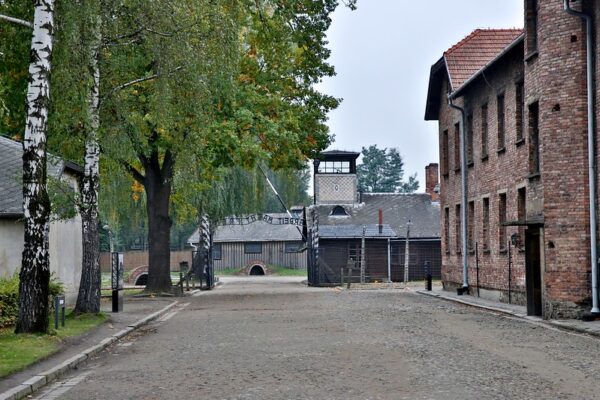
July 2 The Auschwitz-Birkenau State Museum was created by an act of the Polish parliament on July 2, 1947, and includes the grounds of two extant parts of the Auschwitz I and Auschwitz II-Birkenau concentration camps.
Photo: Auschwitz-Birkenau State Museum.
Credit: Victor Wong CC BY-NC-SA 2.0
↑top
All content ⒸConference on Jewish Material Claims Against Germany (Claims Conference)